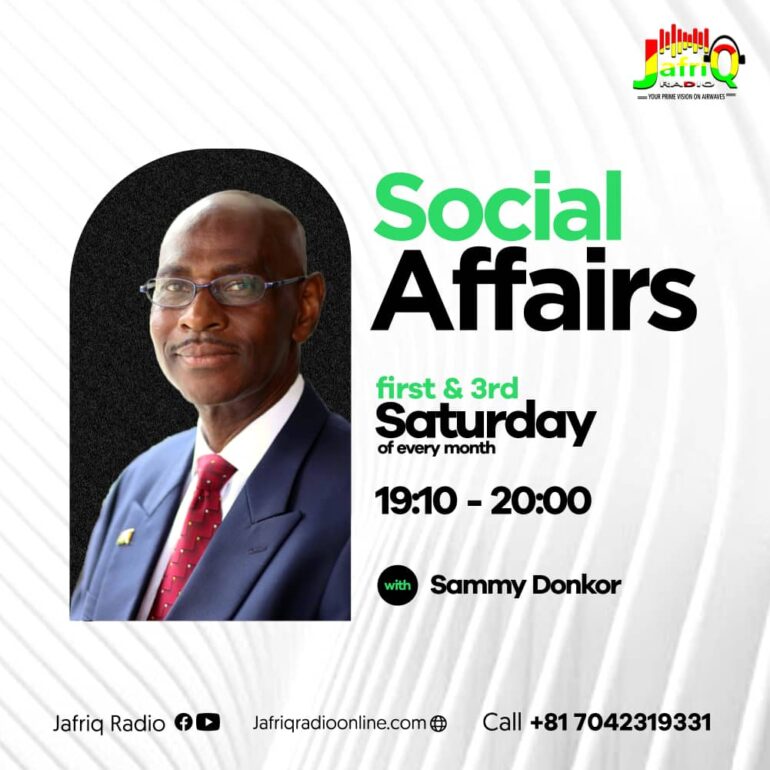DON'T MISS ANYTHING!
Subscribe to our newsletter
Lorem ipsum dolor sit amet, consectetur adipiscing elit.
Listeners:
Top listeners:
LISTEN NOW: JafriQ Radio Live On Jafriq Radio
[ad_1]
What would the manifesto for a more inclusive world look like if it were drafted by people with disabilities? It was, a few weeks ago at a UN Summit. But is it enough?
Not long ago, I sat in a classroom in Freetown, Sierra Leone, taking it all in as a young visually impaired student ran her fingers across a braille version of the UN’s Sustainable Development Goals (SDGs). Five years ago, these global promises for a better future weren’t accessible to many young people like her. It took our persistent advocacy to get these fundamental documents translated into braille, a basic right that should have been automatic.
This scene captures both the progress we have made and how far we still must go. As a disability rights activist who recently attended the UN Summit of the Future in New York in September, I’ve witnessed firsthand how the voices of youth with disabilities continue to be relegated to the margins of global decision-making, despite promises of inclusion.
The Summit produced the Pact for the Future, mentioning disability 13 times in the Pact and its annexes, and making welcome promises about social and technological inclusion. But as someone who has navigated the challenges of being a young person with a disability in Africa, I know that words on paper – whether in print or braille – mean little without concrete action behind them.
In my country, Sierra Leone, we are seeing what real inclusion can achieve. Thanks to funding from the government of Ireland and development partners like Sightsavers, young people with disabilities are being introduced early to civic responsibility and participation in political and local development initiatives. The result has seen previously shy and sidelined persons with disabilities gaining confidence to take on leadership positions in school and participate in elections as ad-hoc officers. Their growing confidence and visibility are changing perceptions and proving that when given the opportunity, youth with disabilities do not just participate – we lead.
But these success stories remain exceptions rather than the rule. Half of the world’s 240 million children with disabilities have likely never seen the inside of a classroom. Seven out of ten persons with disabilities cannot find employment. Behind these statistics are real young people with dreams, ideas, and solutions for the challenges our world faces.
It was hoped the Summit of the Future would be a turning point for youth inclusion. After all, in the 2030 Agenda, young people are invited to “channel their infinite capacities for activism into the creation of a better world.” But while disability rights featured in some discussions, most of us were still confined to side events rather than main sessions where crucial decisions were being made. It is a familiar pattern: we are invited to share our stories but rarely empowered to shape the solutions.
Based on my experiences advocating for disability rights since primary school, I believe three fundamental changes are needed:
At the Summit, world leaders promised to strengthen partnerships across society and protect the rights of all people, including persons with disabilities. But we have heard such promises before. What makes this moment different is the growing chorus of young voices with disabilities refusing to be silent. World leaders must see and use the Pact for the Future as an instrument to accelerate progress toward the Sustainable Development Goals.
In my work with Youth and Children in Support of the SDGs Sierra Leone, I have seen how young people with disabilities, when given the right tools and opportunities, become powerful advocates for change. We are not asking for special treatment – we are demanding equal chances to contribute to decisions that will shape our future.

Get the latest in African news delivered straight to your inbox
Almost finished…
We need to confirm your email address.
To complete the process, please follow the instructions in the email we just sent you.
There was a problem processing your submission. Please try again later.
The Summit is over now, but our work is just beginning. The next generation of leaders is here, ready to contribute our unique perspectives and solutions. We do not need more well-meaning promises – we need concrete actions that will open doors and create genuine opportunities for leadership.
The question is not whether youth with disabilities can lead; we have proven we can. The question is whether global leaders are truly ready to share power and create space for new voices at the table. Actions speak louder than words.
Basiru Bah, a Global youth champion with Sightsavers Equal World, is a political science graduate and law student based in Freetown, Sierra Leone. Basiru, who is visually impaired, recently became involved with a citizenship and political participation programme led by Sightsavers and funded by Irish Aid. He has campaigned at a global level, including leading the advocacy for the Sustainable Development Goals (SDGs) to be translated into braille.
[ad_2]
Source link
Written by: jafriqradio
africa Business Climate Conflict current events economy Environment Food and Agriculture Governance Legal and Judicial Affairs news Peace and Security Politics sports trade travel

For every Show page the timetable is auomatically Social Affairs
closeLorem ipsum dolor sit amet, consectetur adipiscing elit.
© JAfriq RAdio 2024 All Rights Reserved. By Octagram, Inc
Post comments (0)